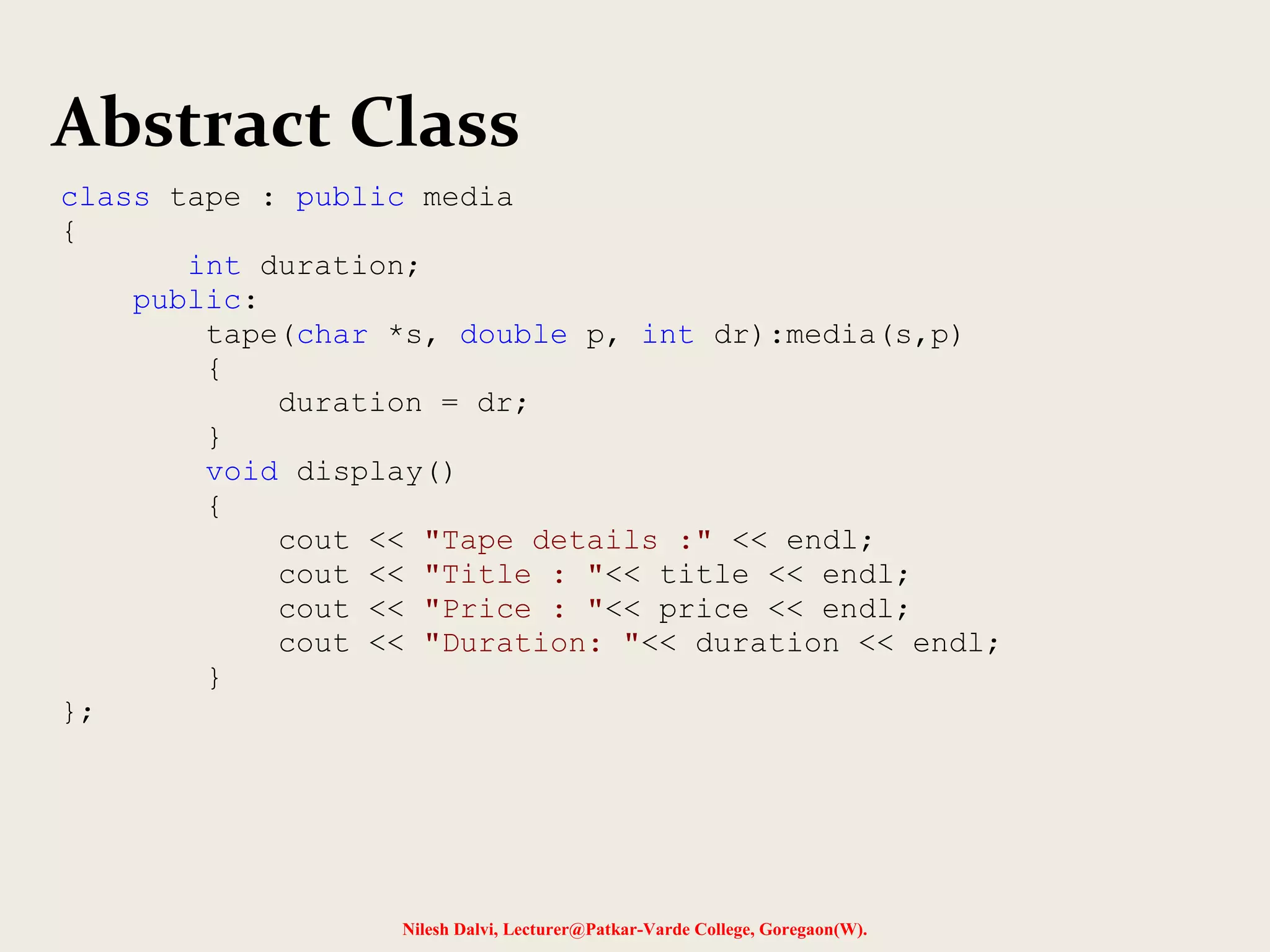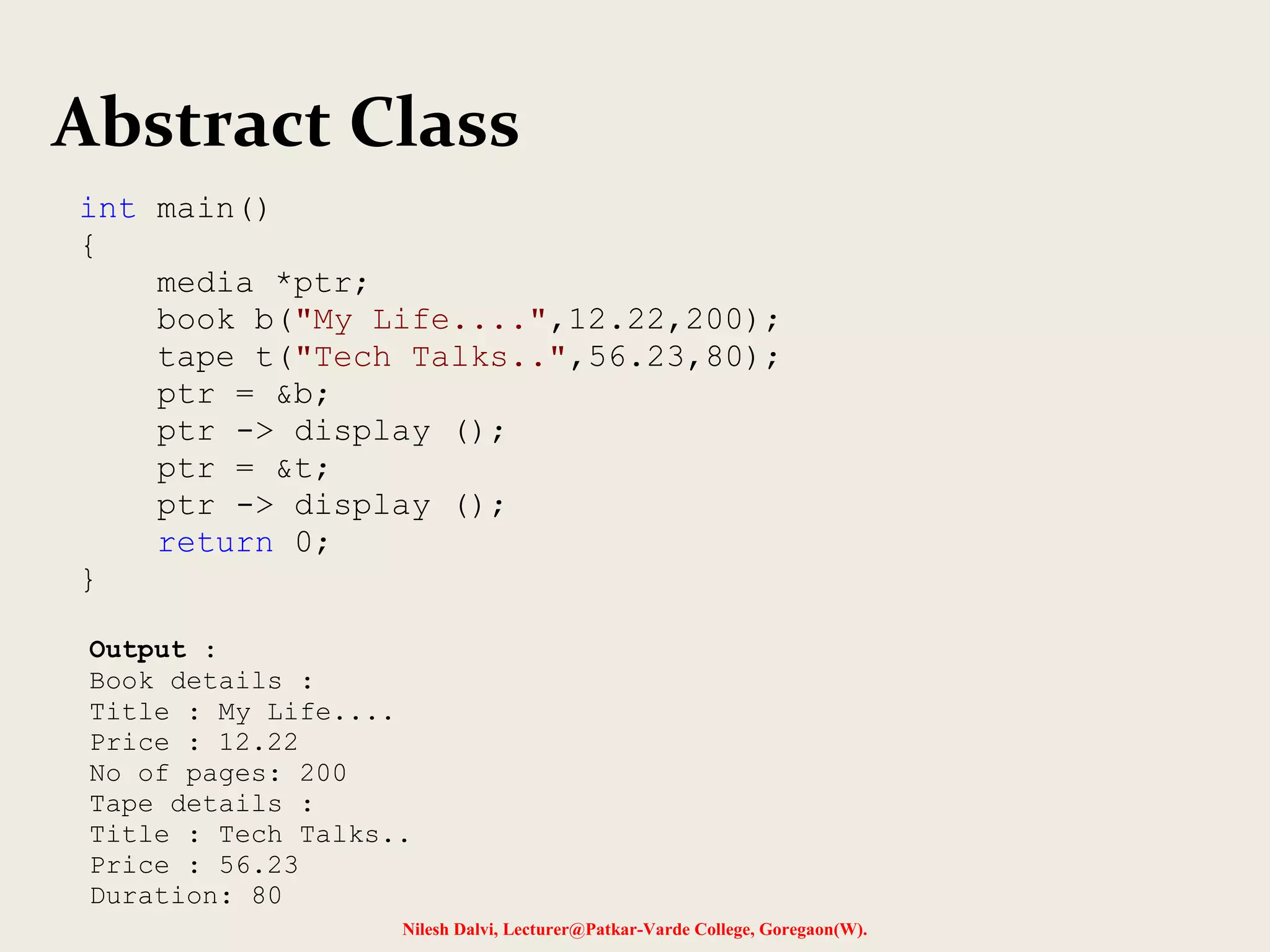- The document discusses polymorphism and pointers in C++. It defines polymorphism as a technique that allows different forms of a single function to be defined and shared among various objects.
- Pointers store memory addresses and can be used to manipulate objects and inherit from base classes. Virtual functions allow functions to be called polymorphically based on the object's type through a base class pointer.
- Examples are provided to demonstrate pointer declaration, manipulation, inheritance, and virtual functions to achieve runtime polymorphism. Abstract base classes with pure virtual functions are also introduced.
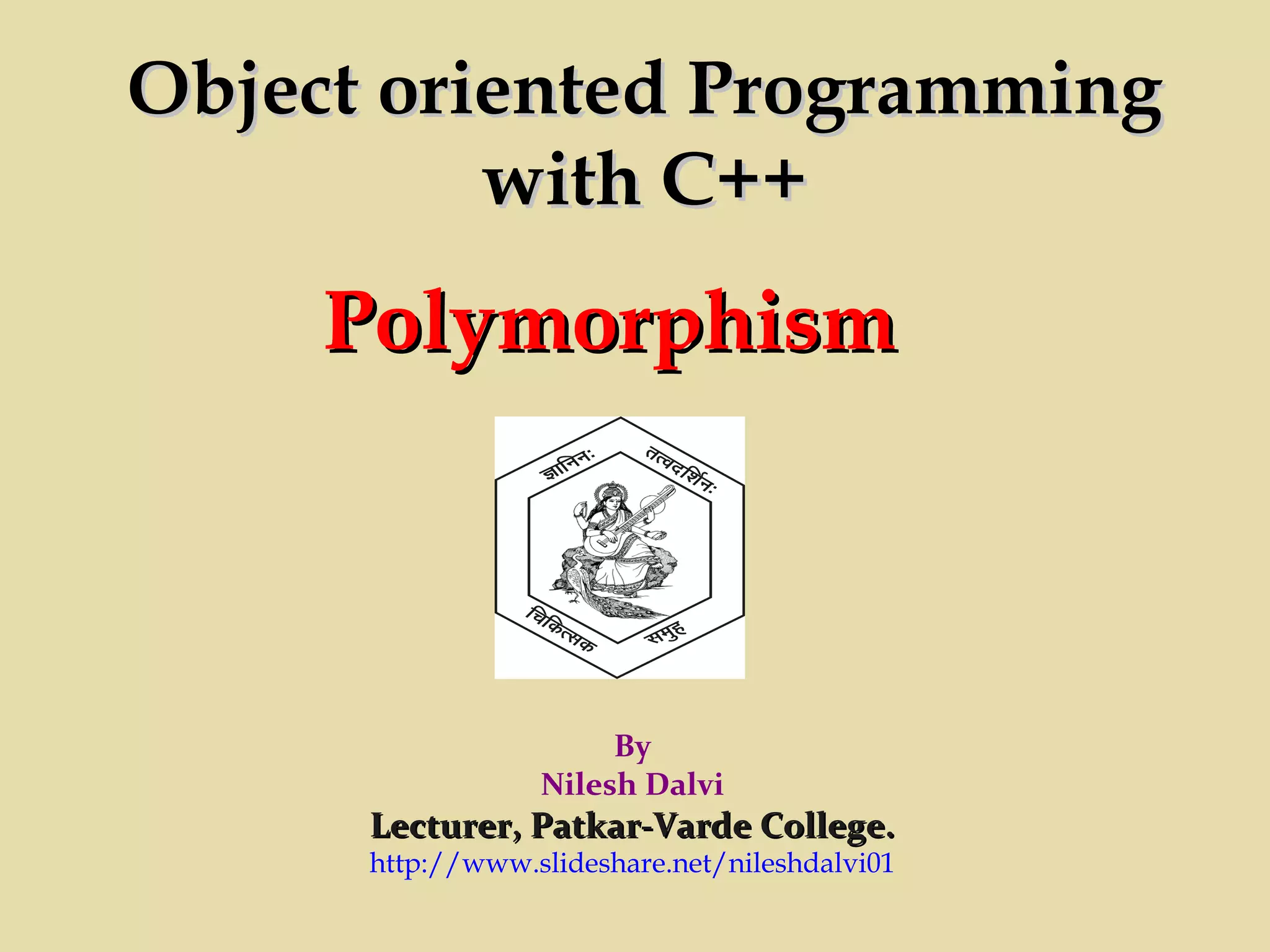
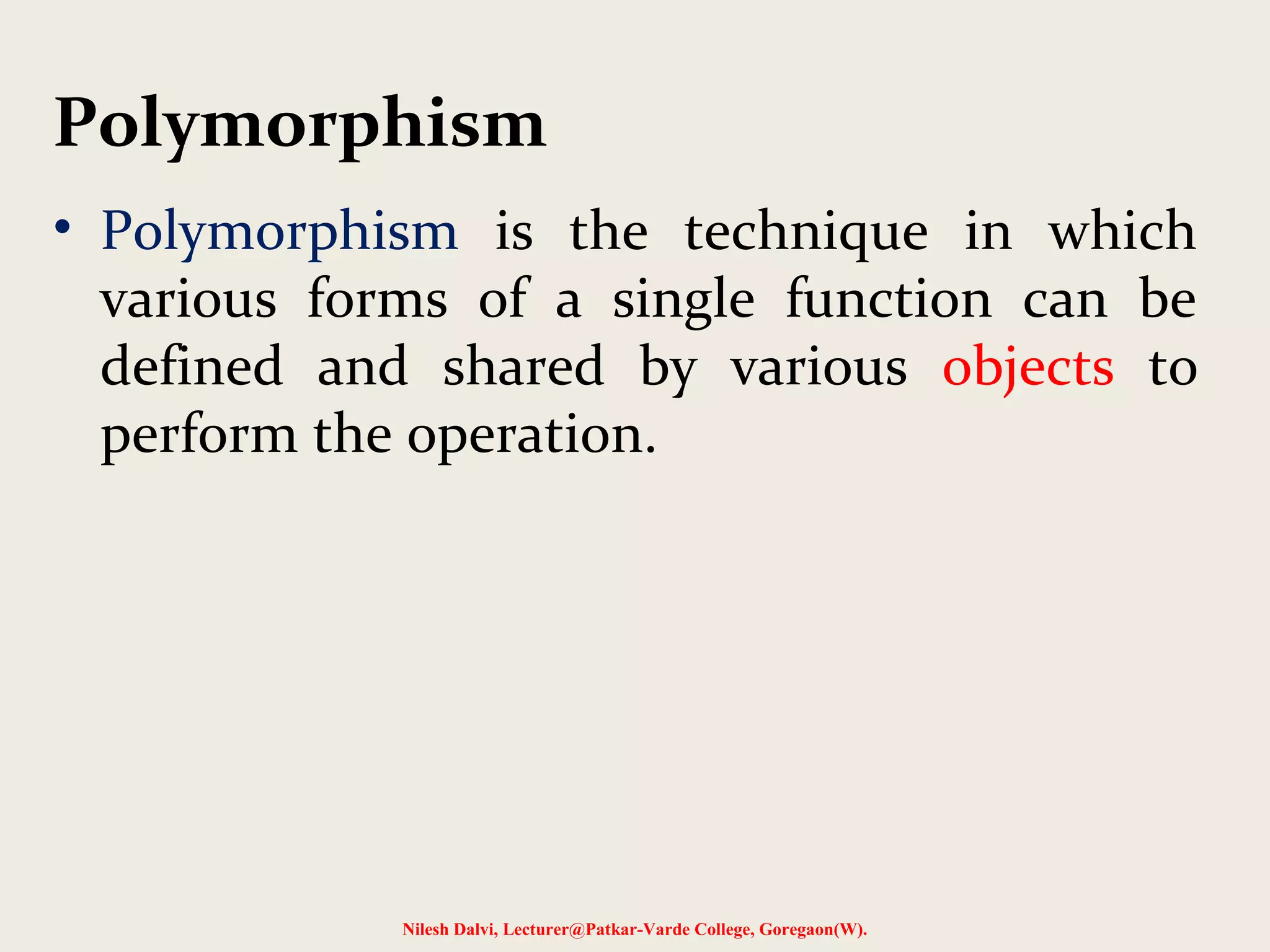
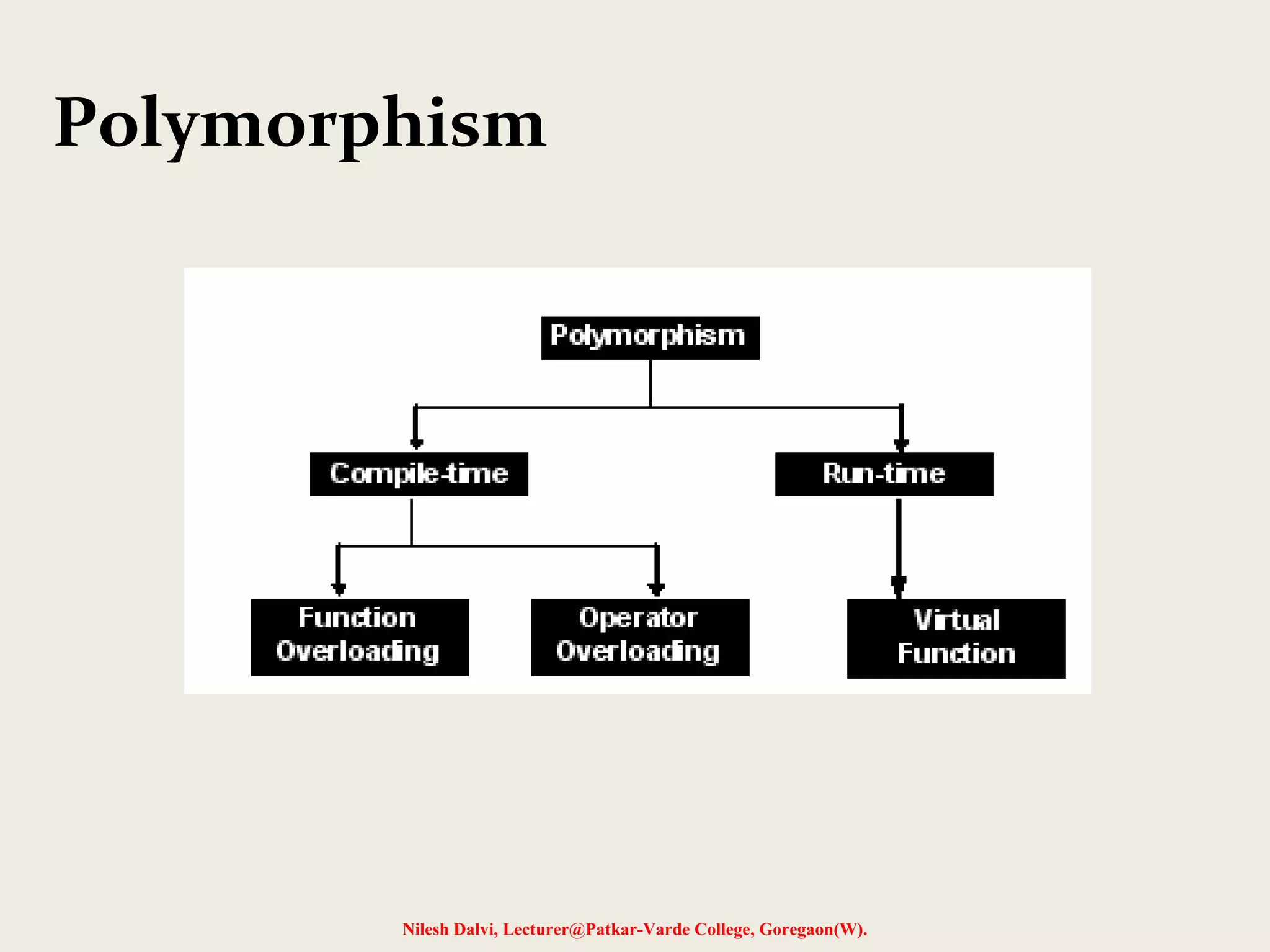

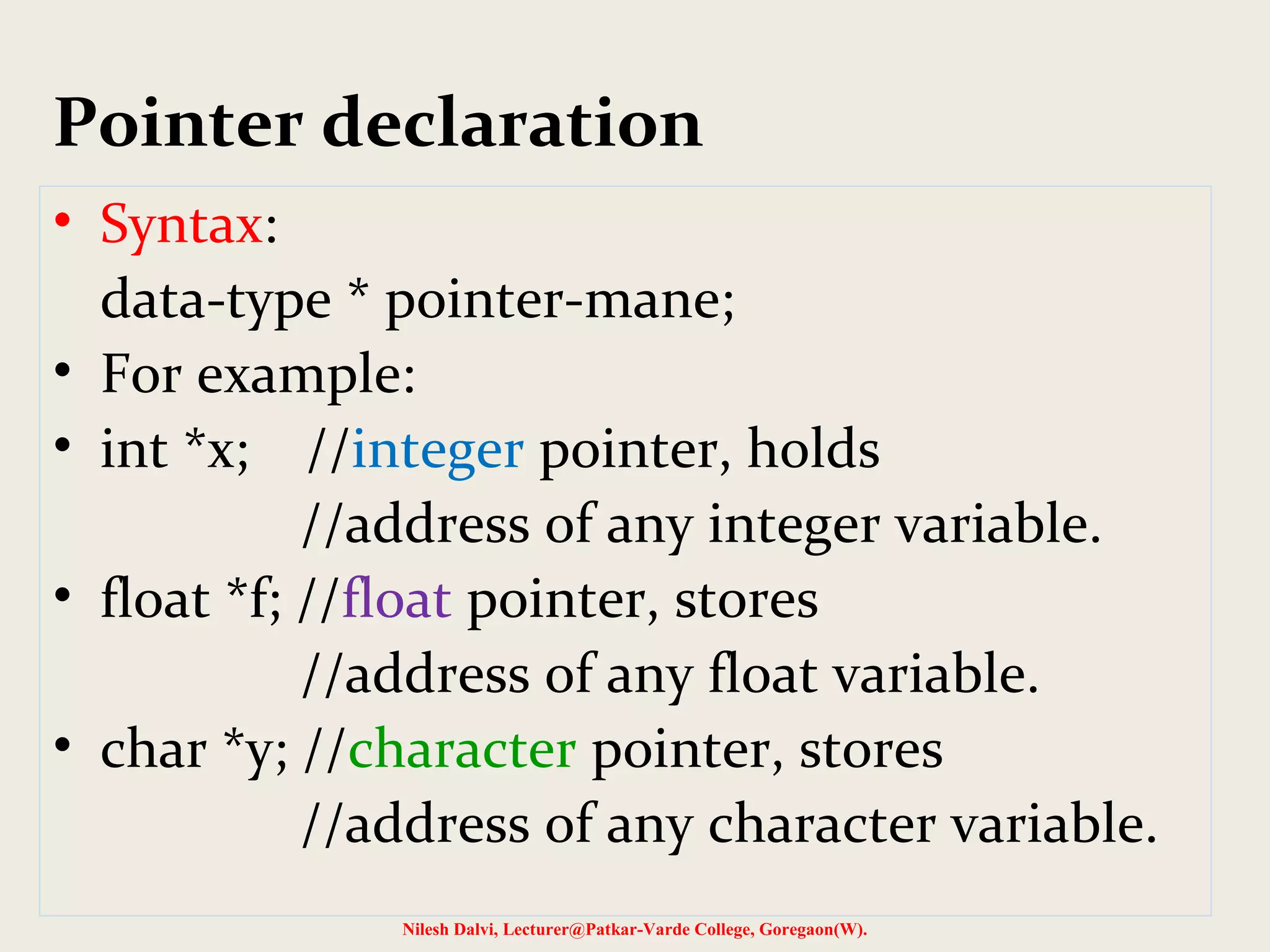

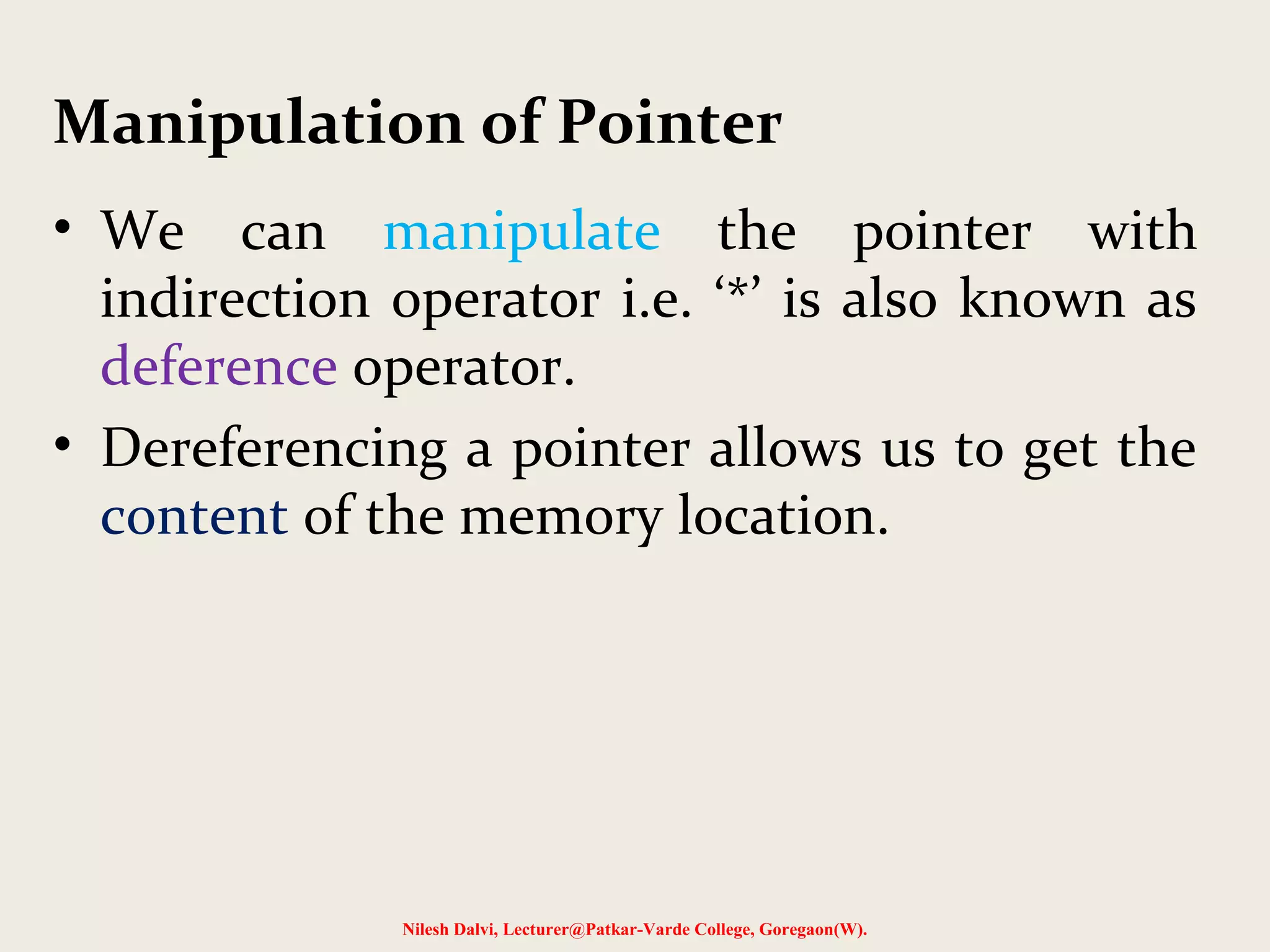


![Nilesh Dalvi, Lecturer@Patkar-Varde College, Goregaon(W).
Pointer Expressions and Arithmetic:
#include <iostream>
using namespace std;
int main()
{
int num [] = {56, 75, 22, 18, 90};
int *ptr;
ptr = &num[0]; // ptr = num;
cout << *ptr <<endl;
ptr++;
cout << *ptr <<endl;
ptr--;
cout << *ptr <<endl;
ptr = ptr + 2;
cout << *ptr <<endl;
ptr = ptr - 1;
cout << *ptr <<endl;
ptr += 3;
cout << *ptr <<endl;
ptr -=2;
cout << *ptr <<endl;
return 0;
}](https://image.slidesharecdn.com/8-140818233136-phpapp02/75/Polymorphism-10-2048.jpg)
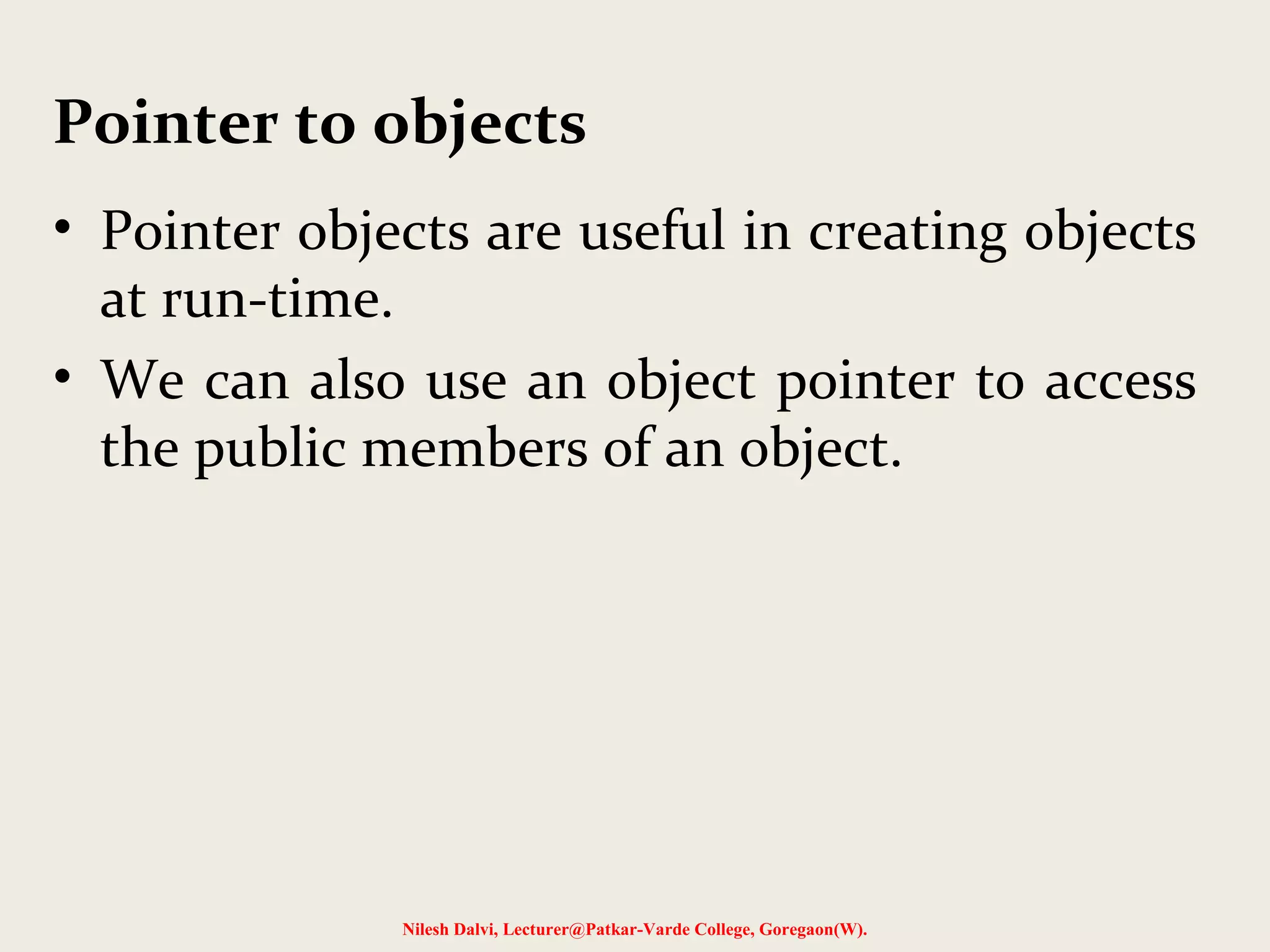
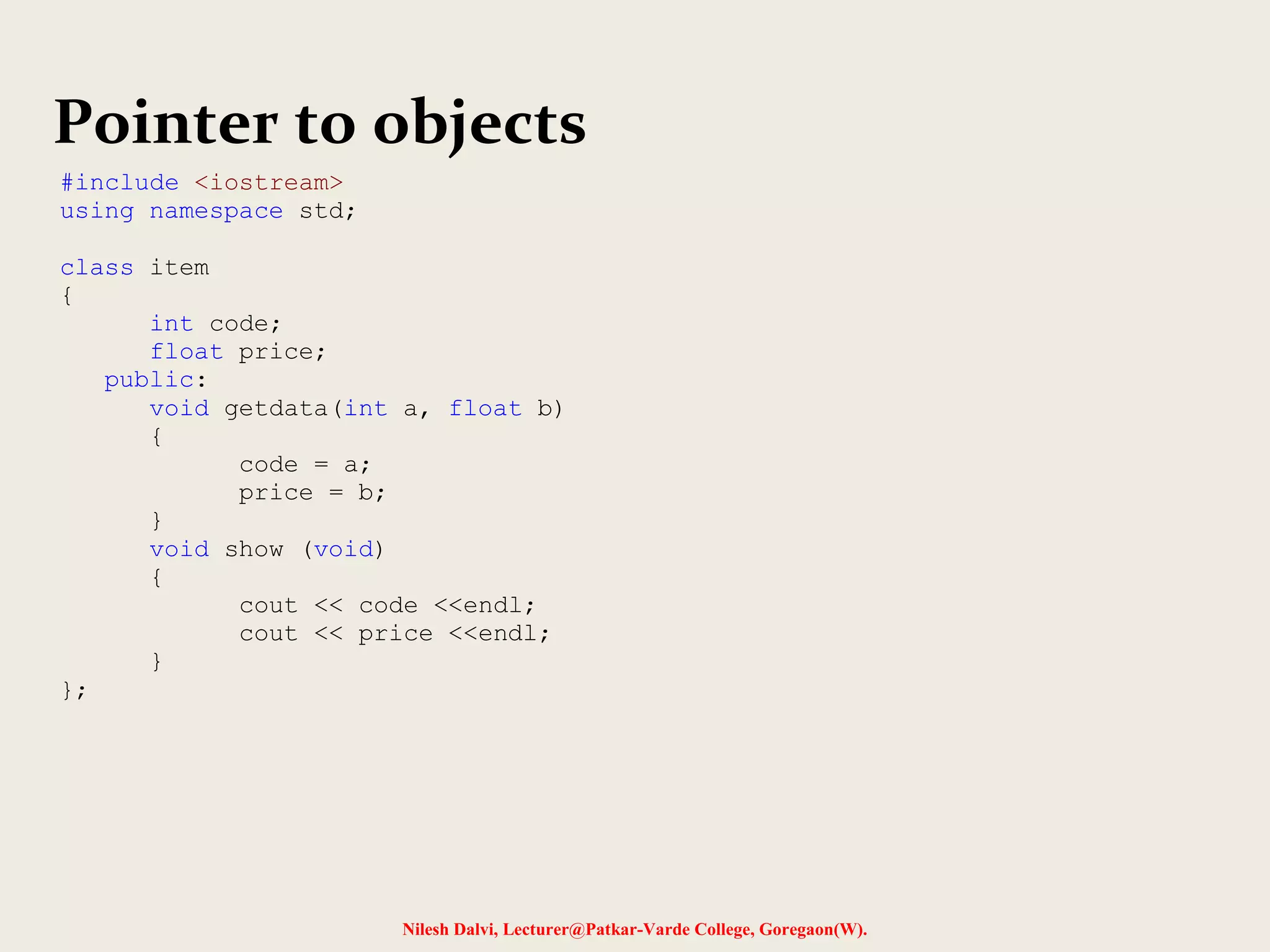
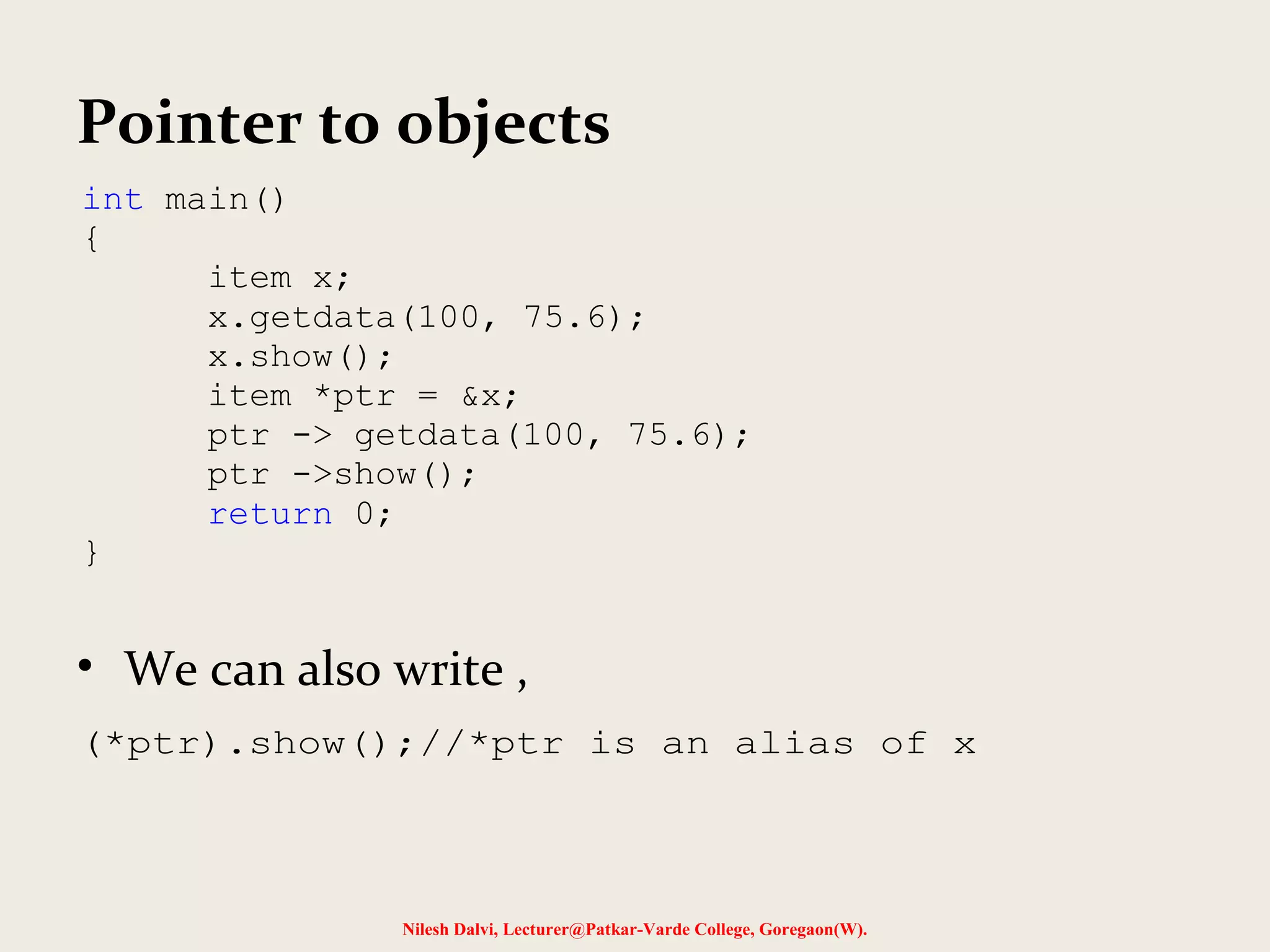
![• We can also create objects using pointers
and new operator as follows:
• Statements allocates enough memory for
data members in the objects structure.
• We can create array of objects using
pointers,
Nilesh Dalvi, Lecturer@Patkar-Varde College, Goregaon(W).
Pointer to objects
Item *ptr = new item;
Item *ptr = new item[10];](https://image.slidesharecdn.com/8-140818233136-phpapp02/75/Polymorphism-14-2048.jpg)
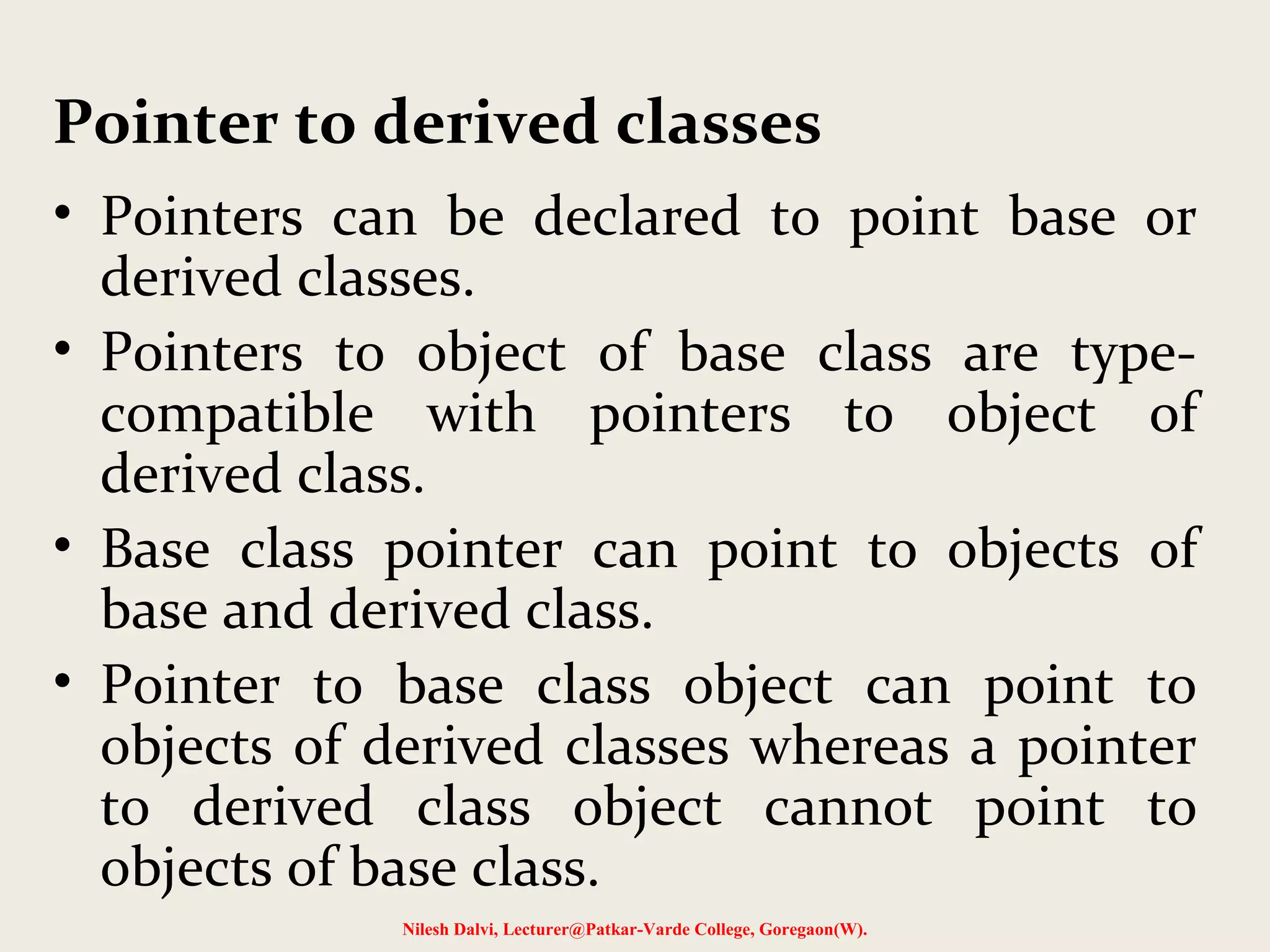
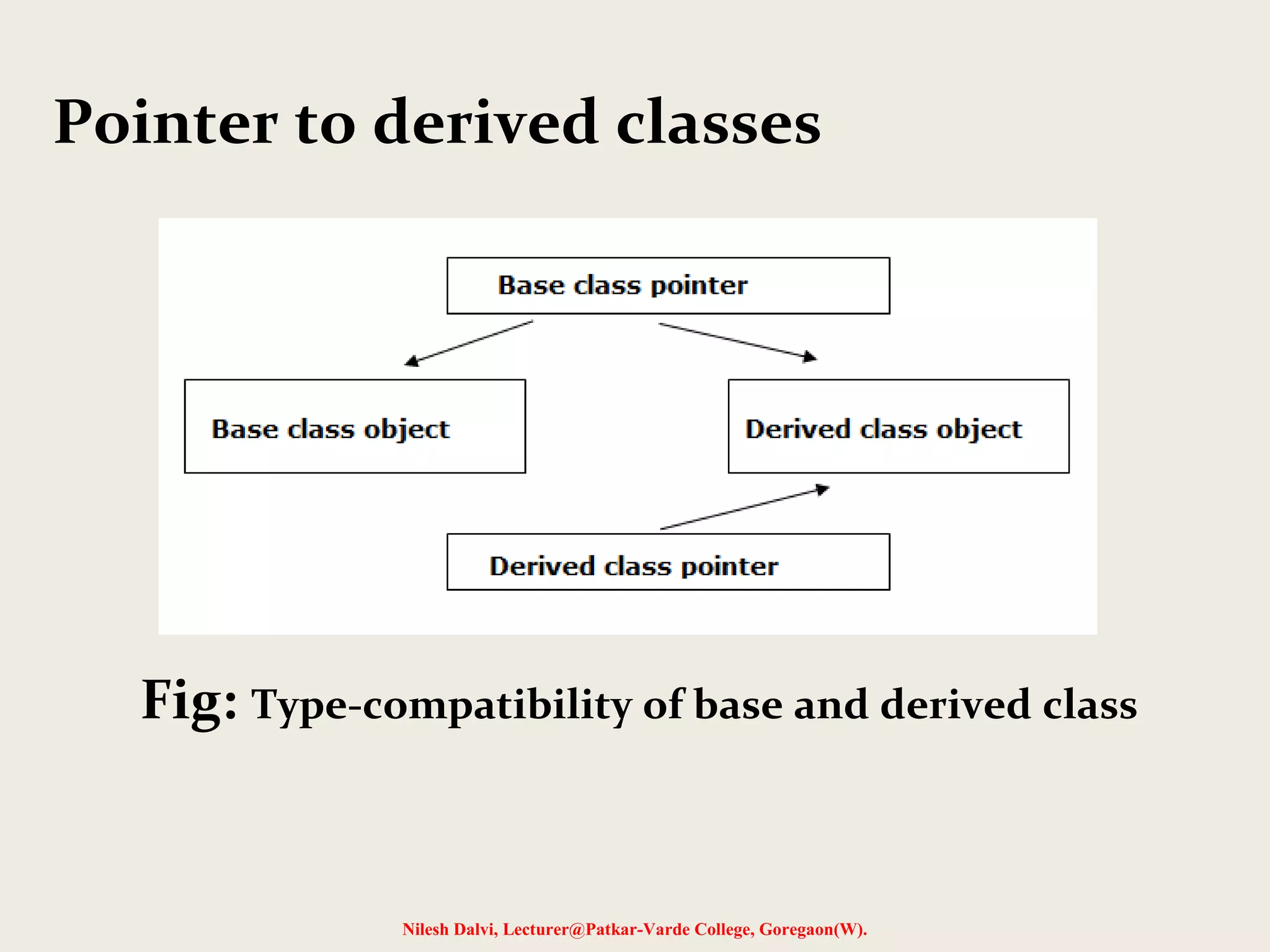

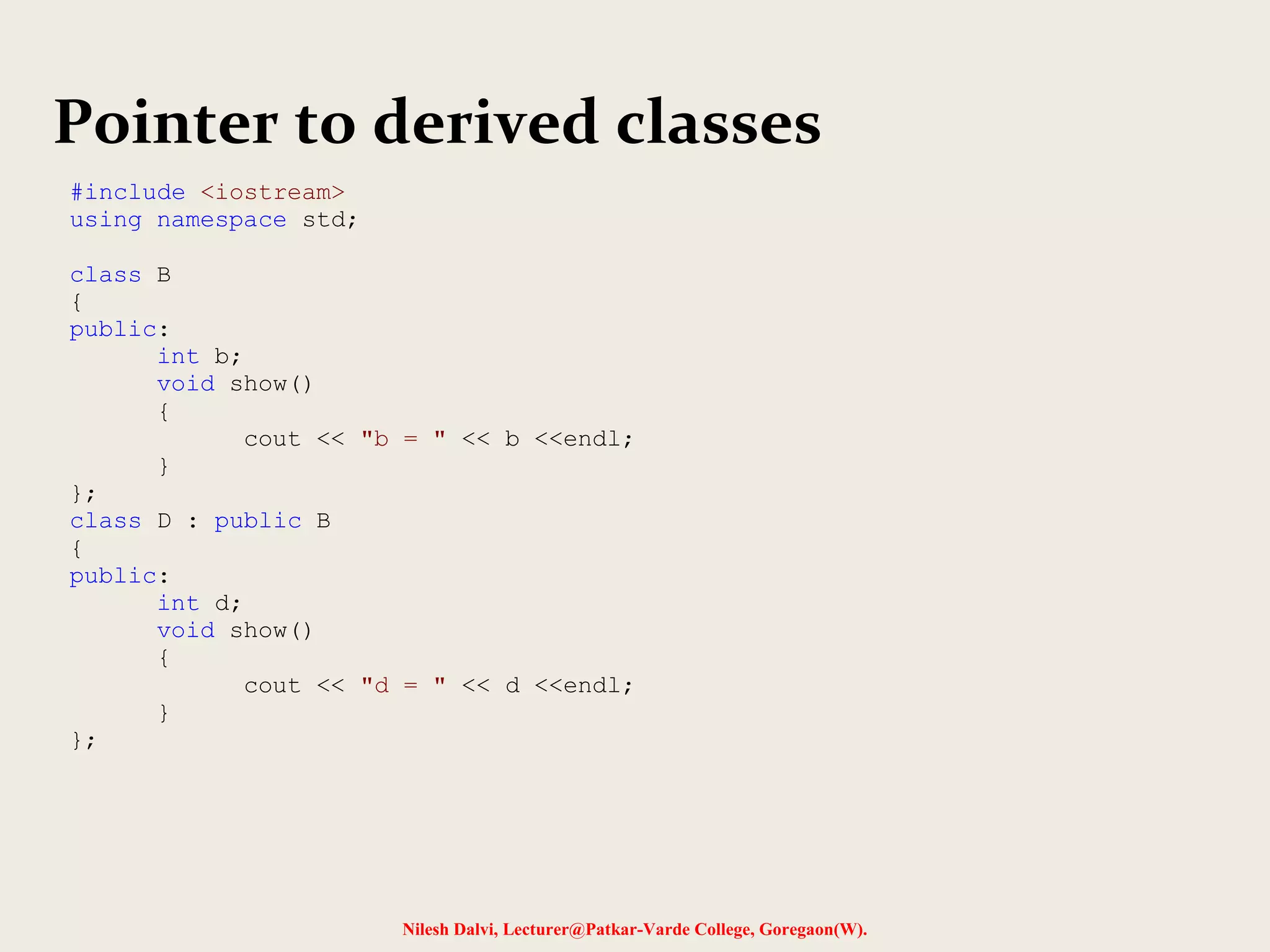
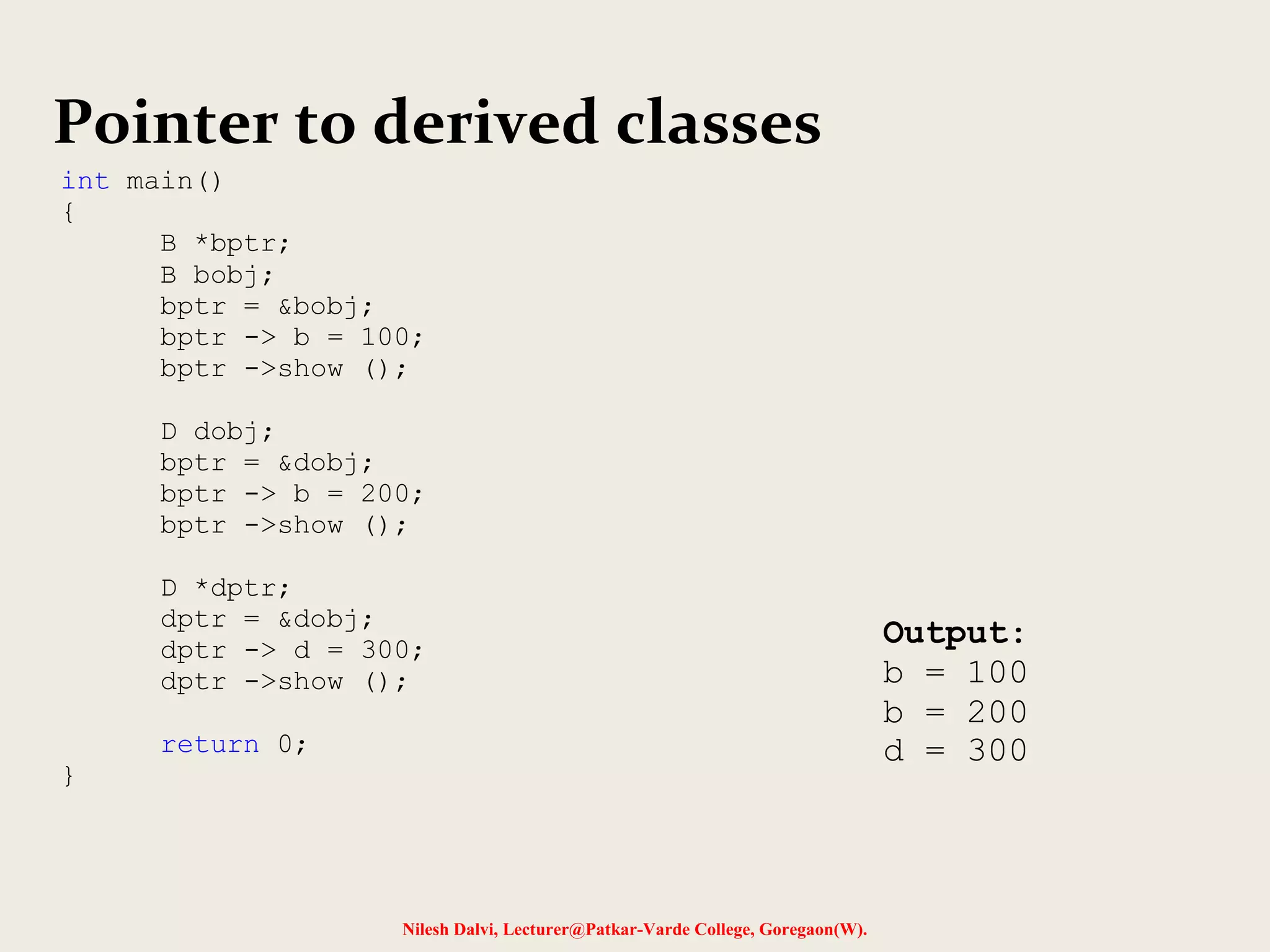
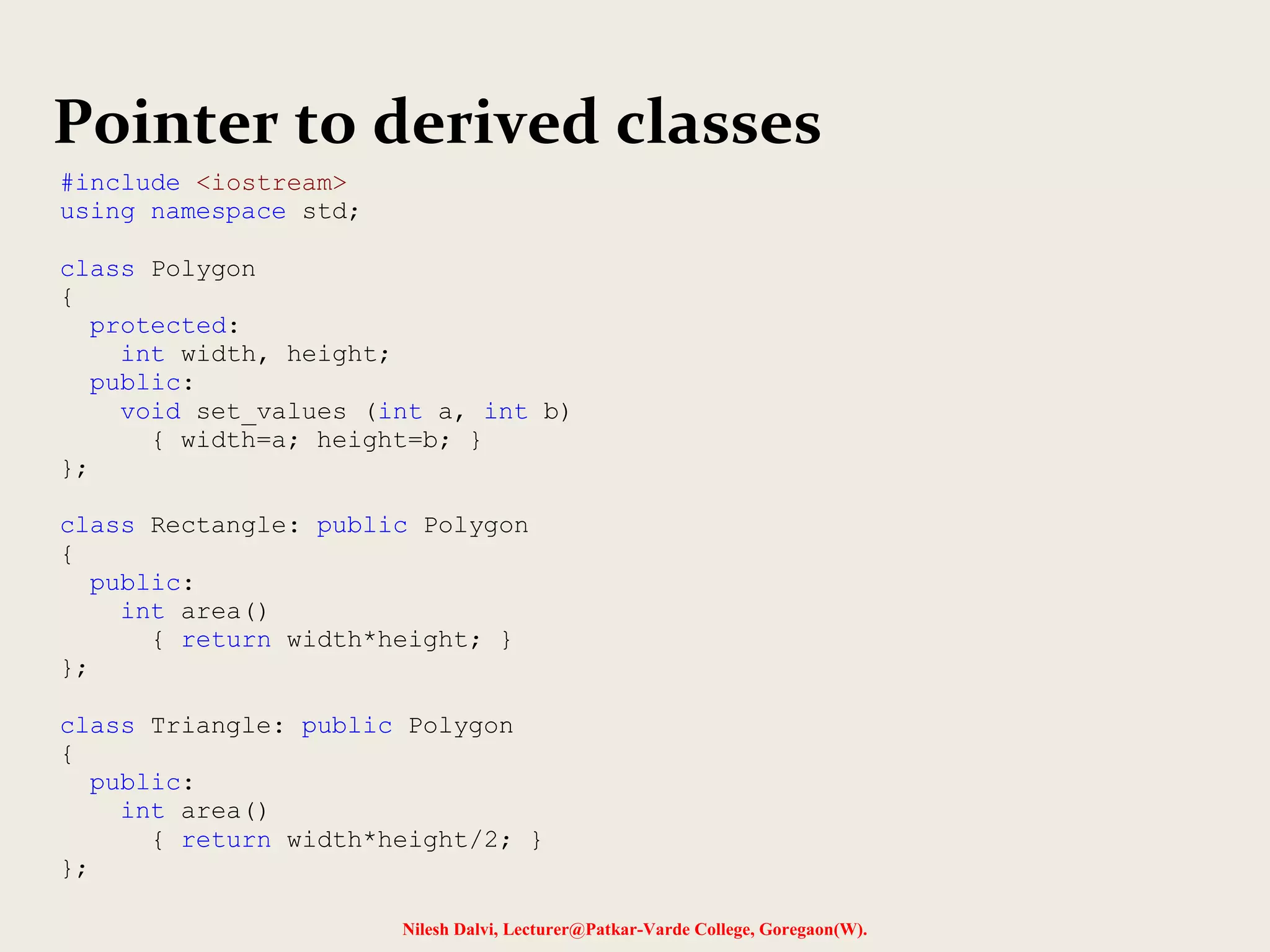
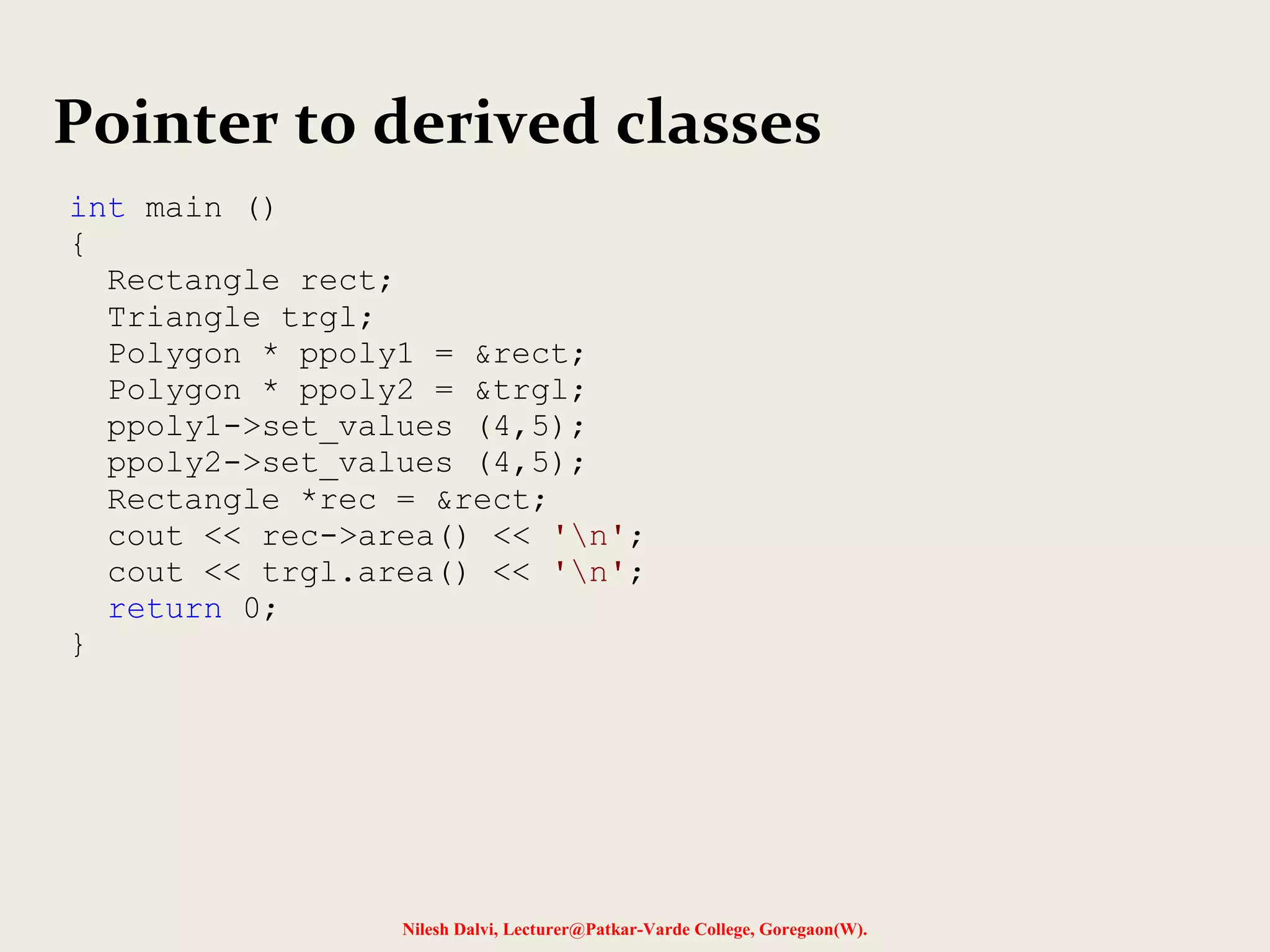

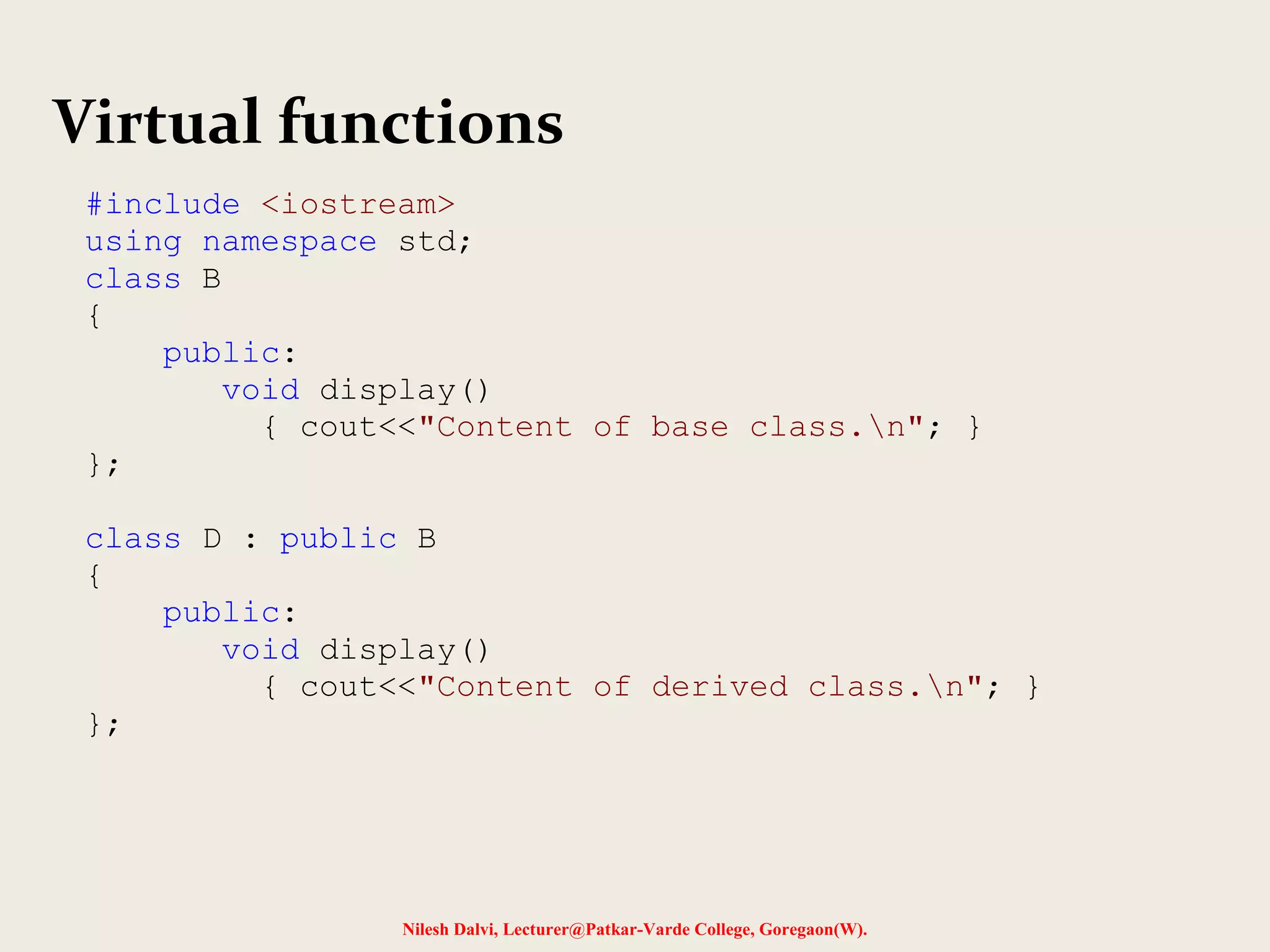
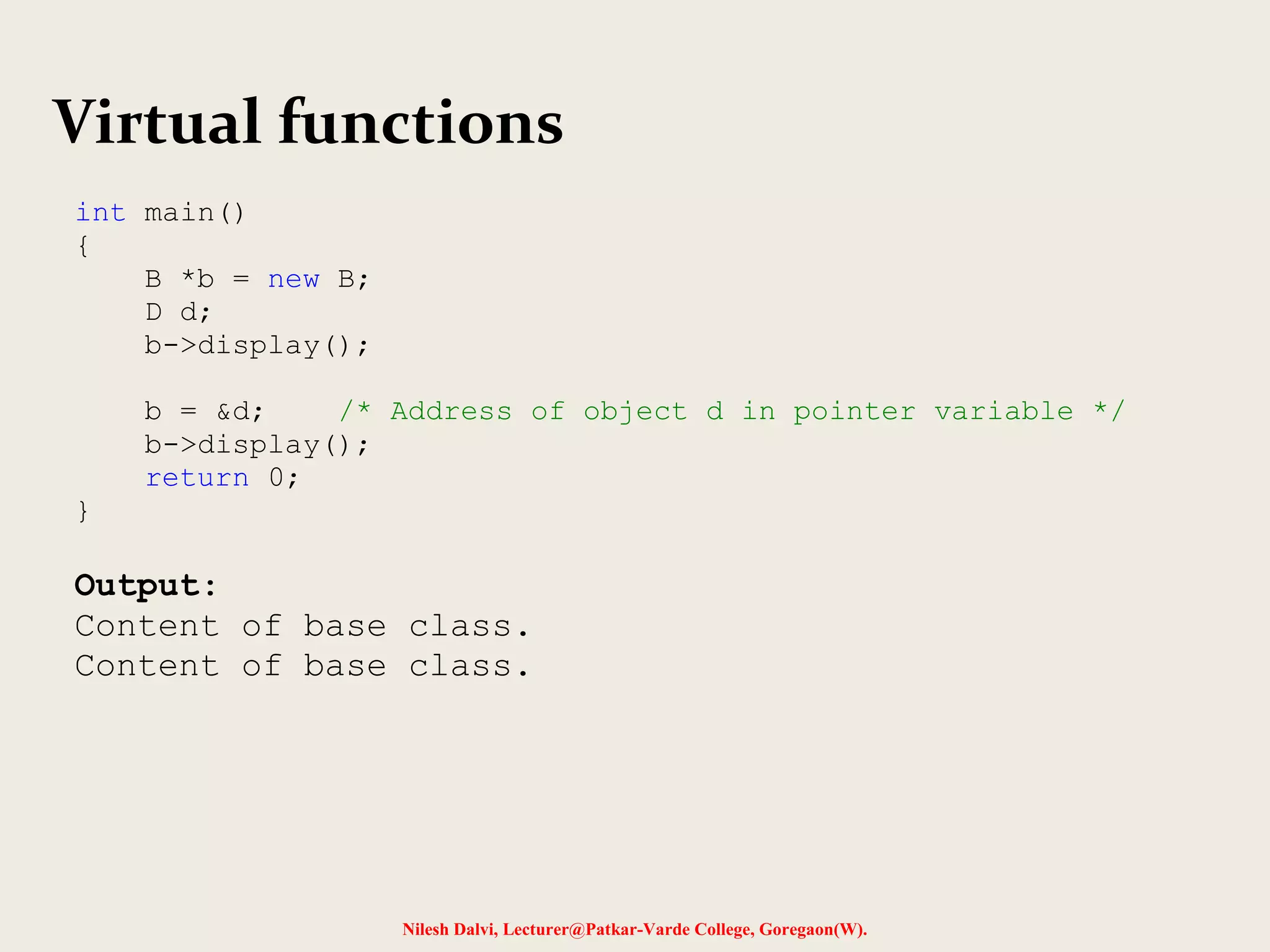
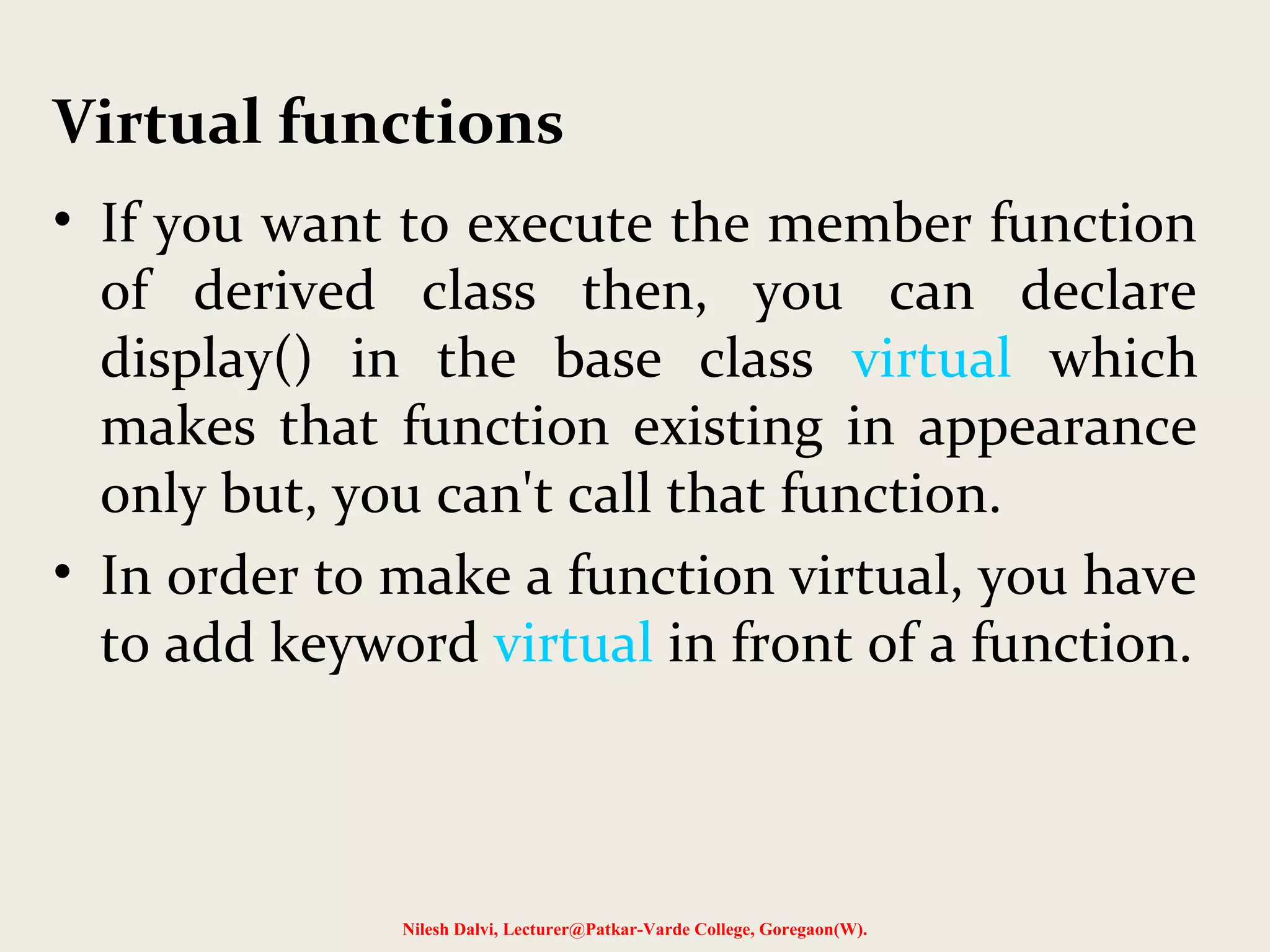
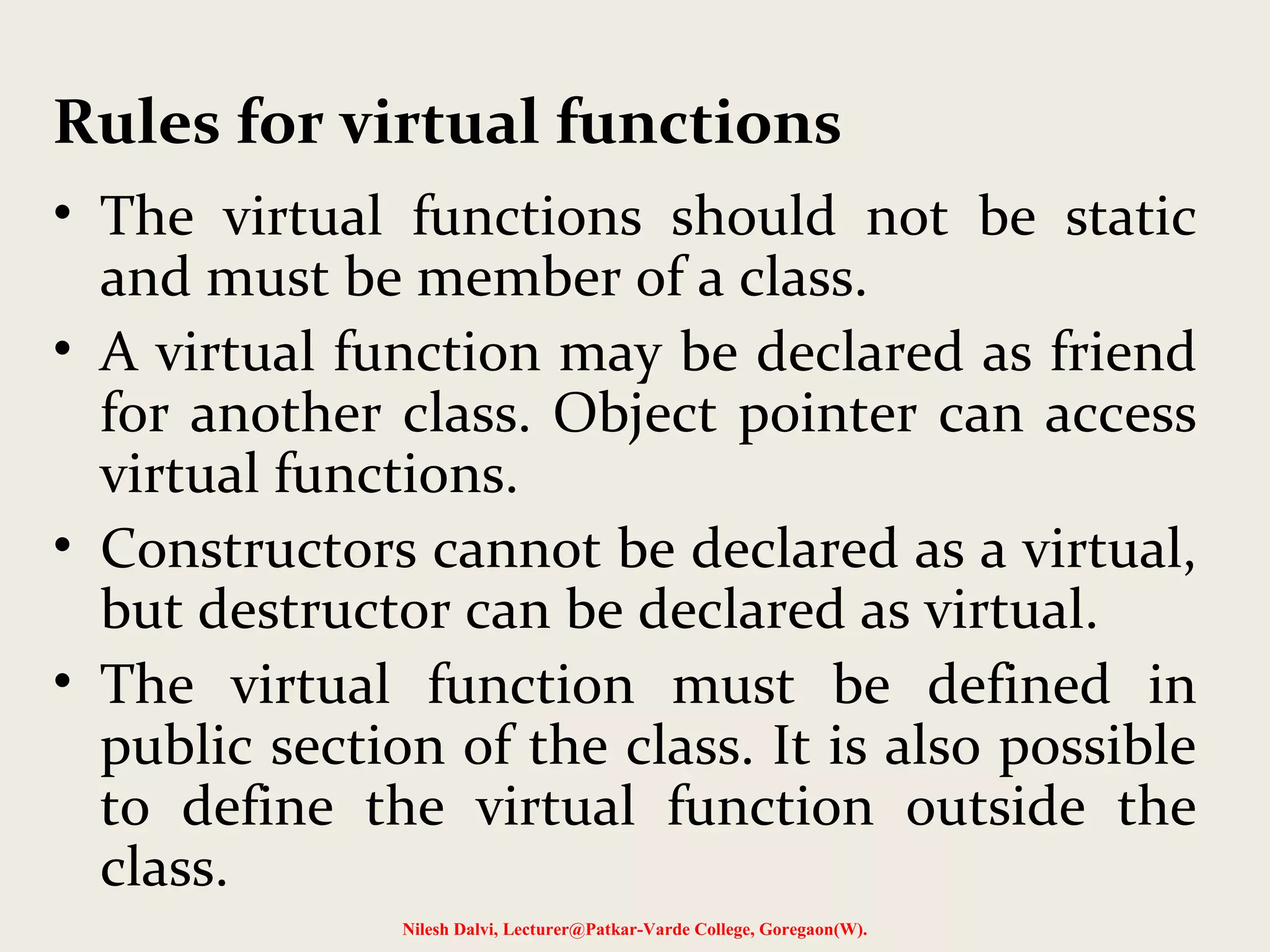
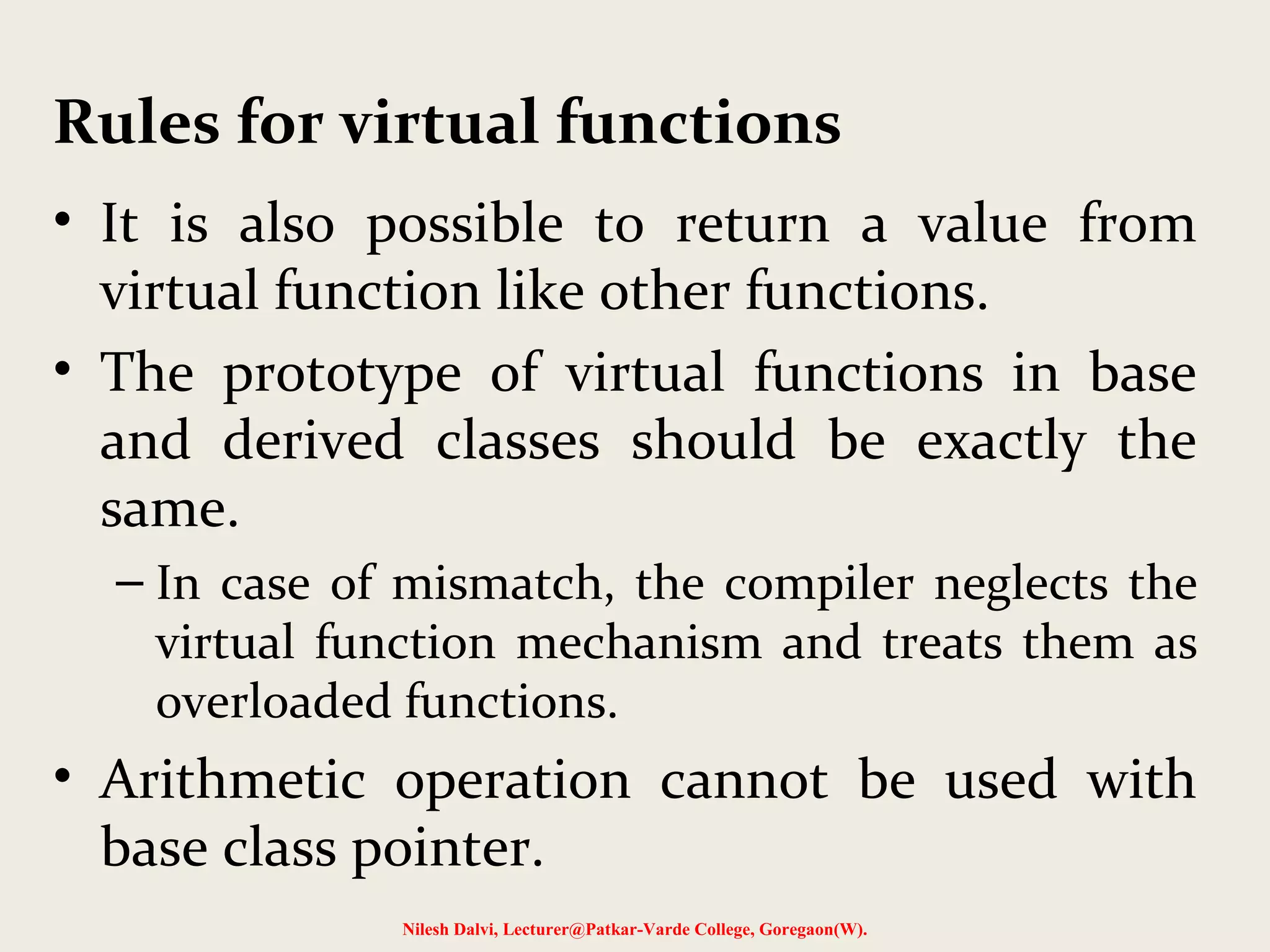

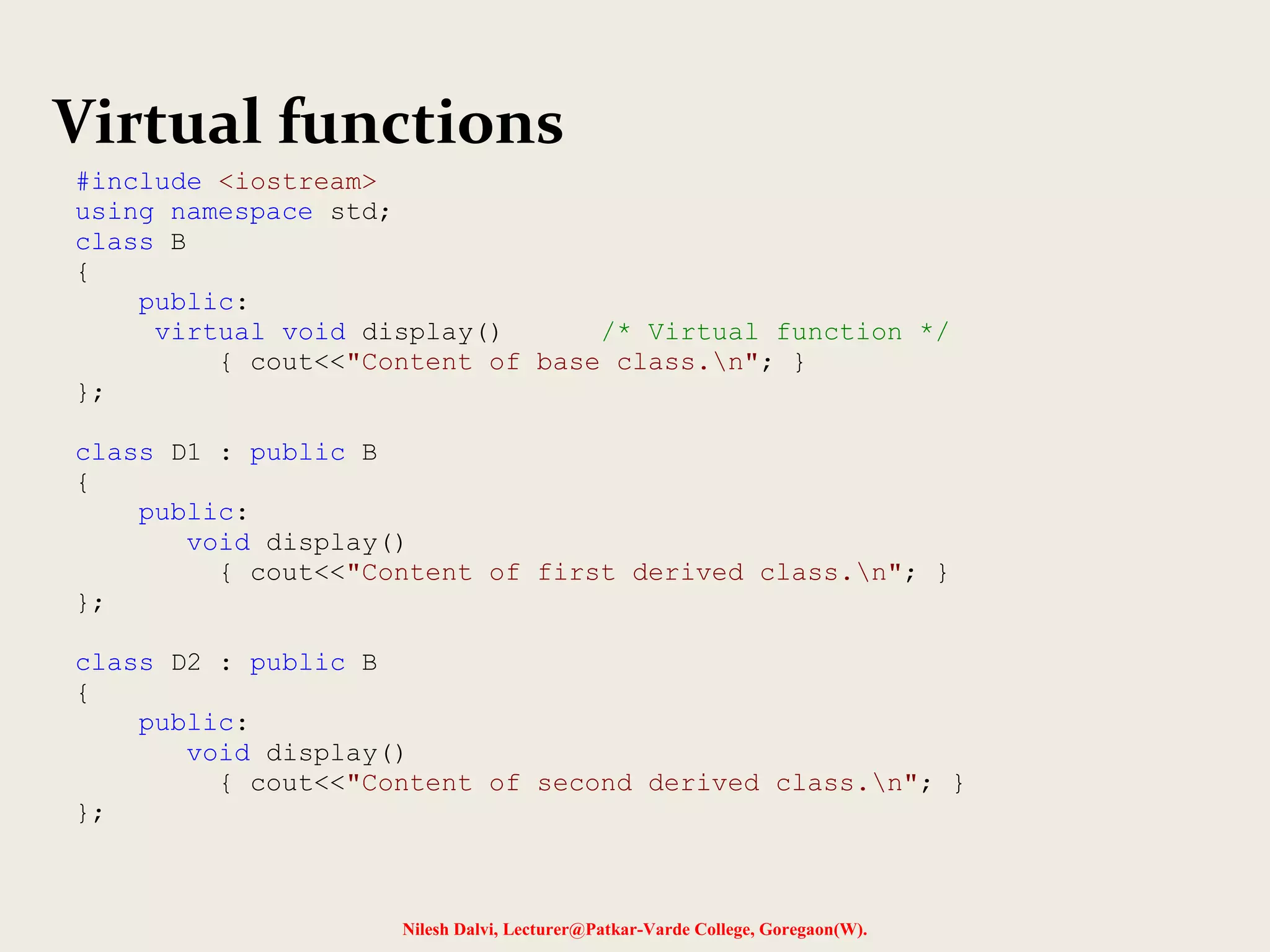
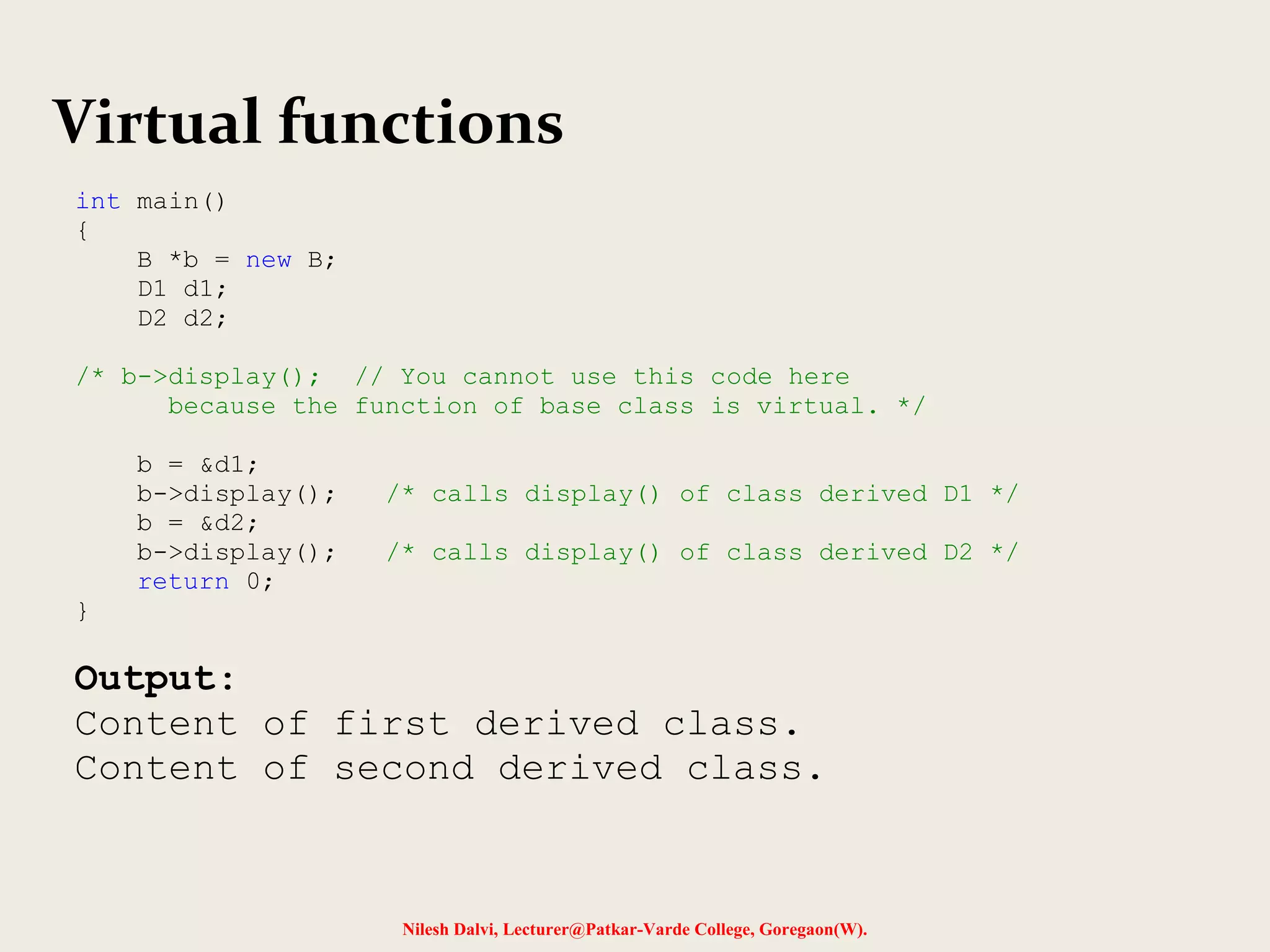
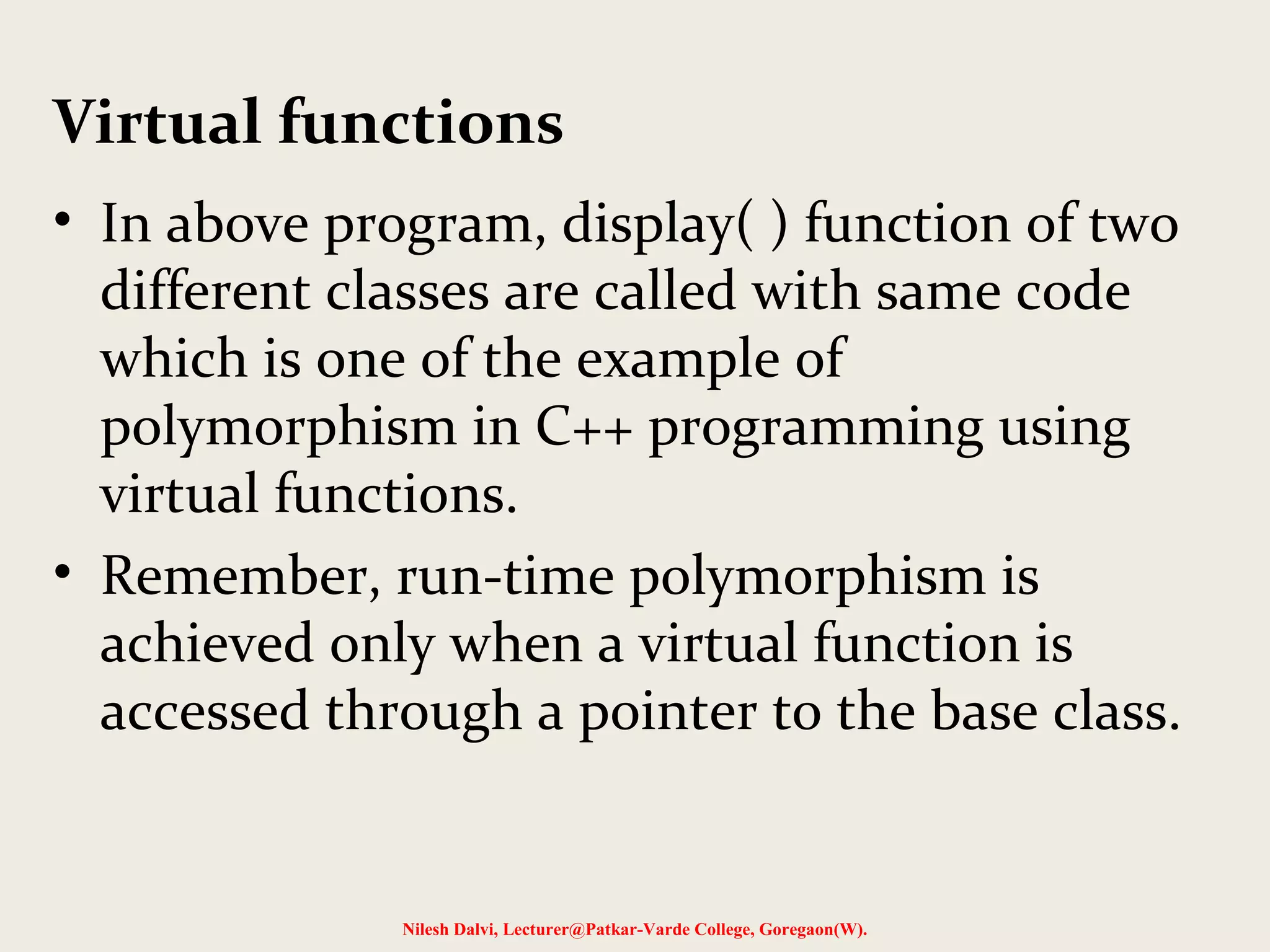
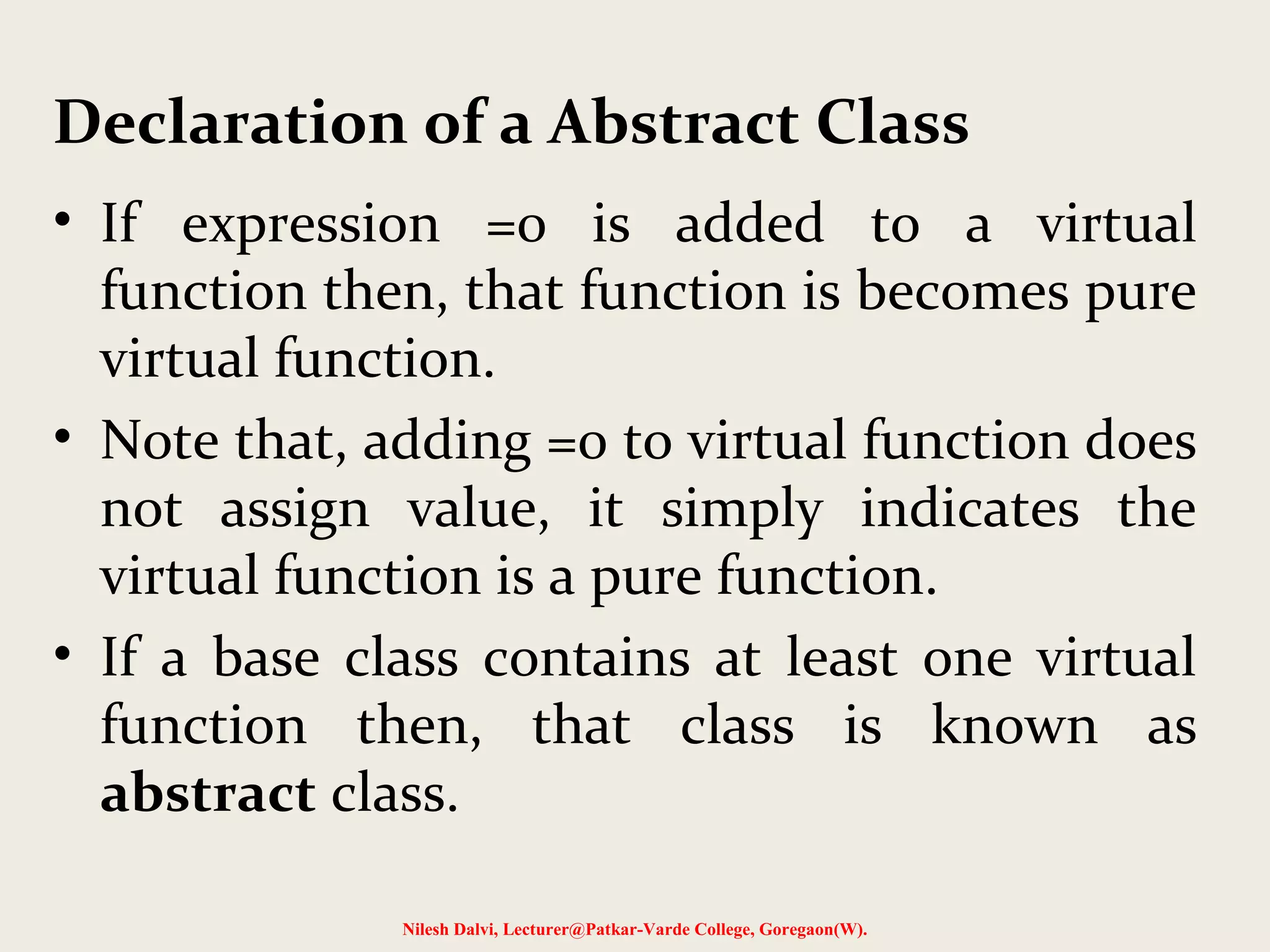
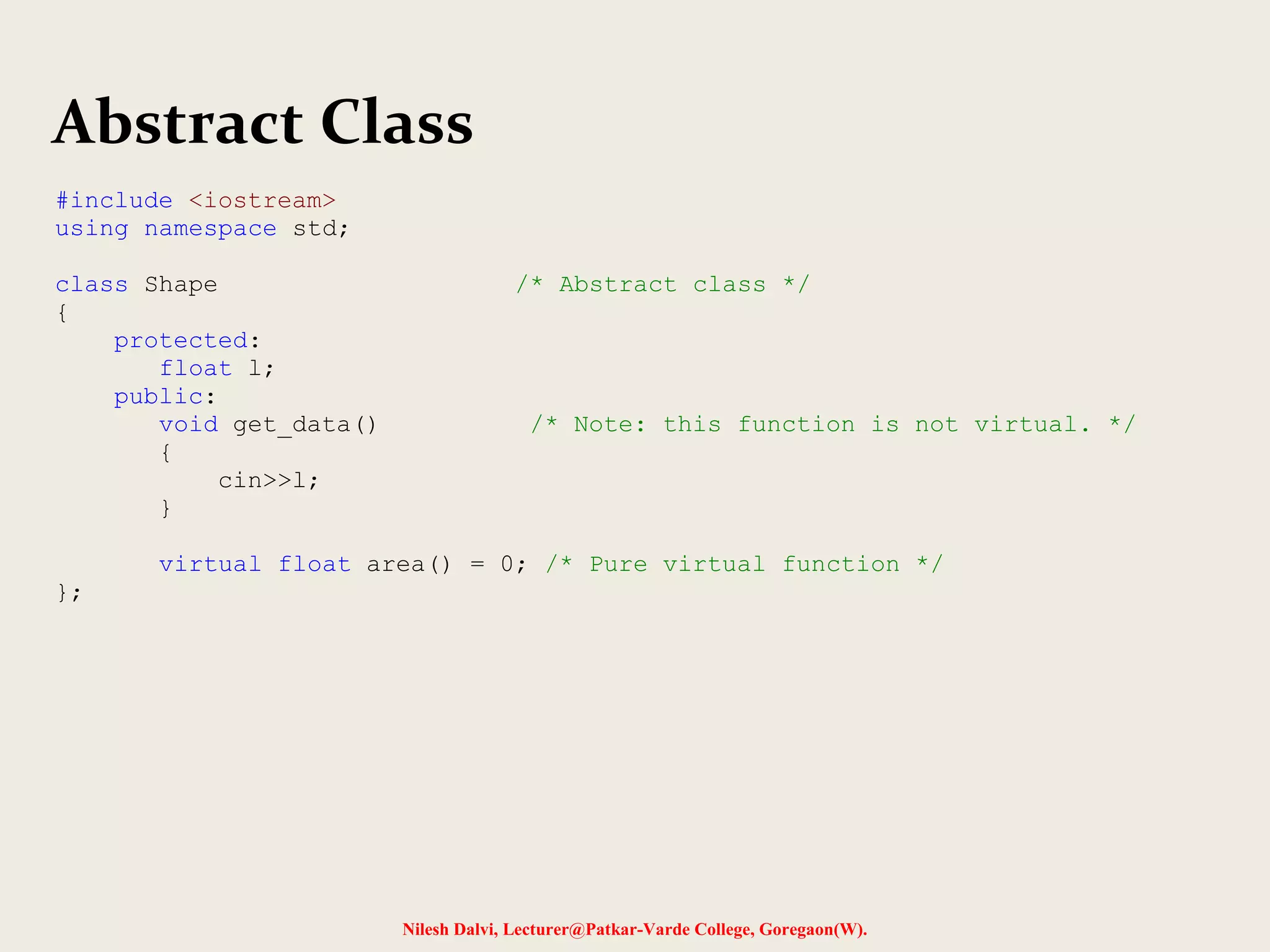
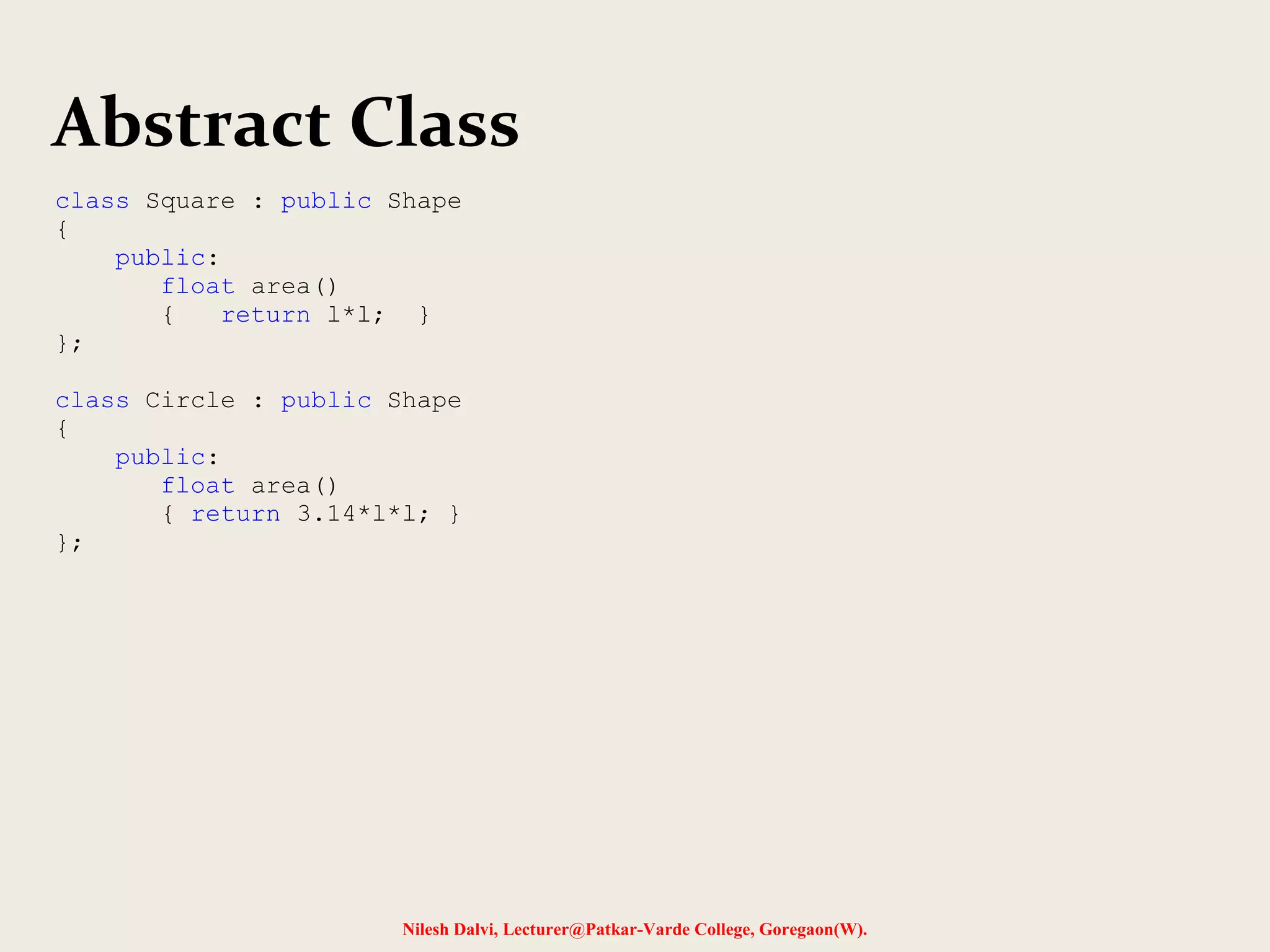
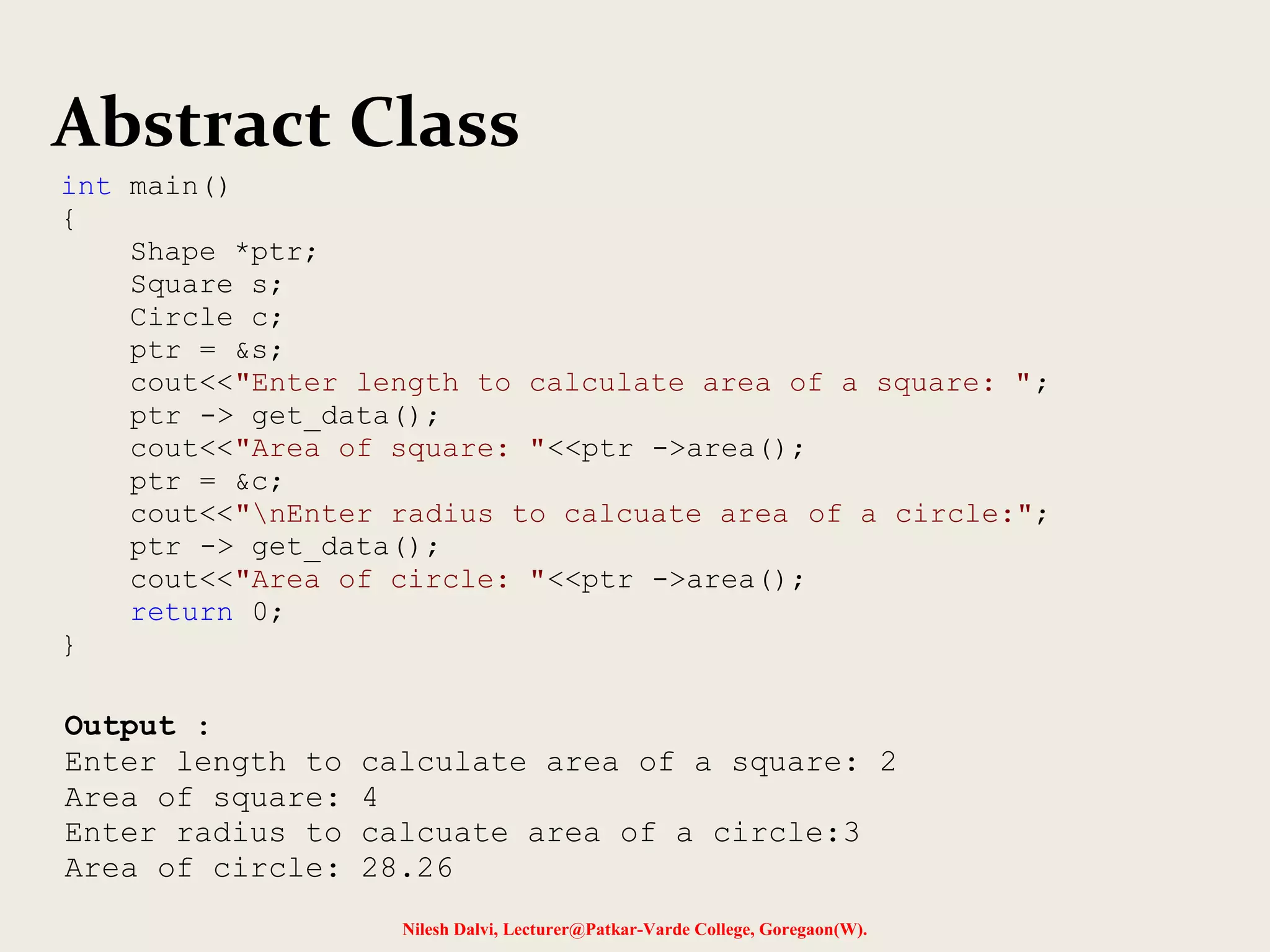

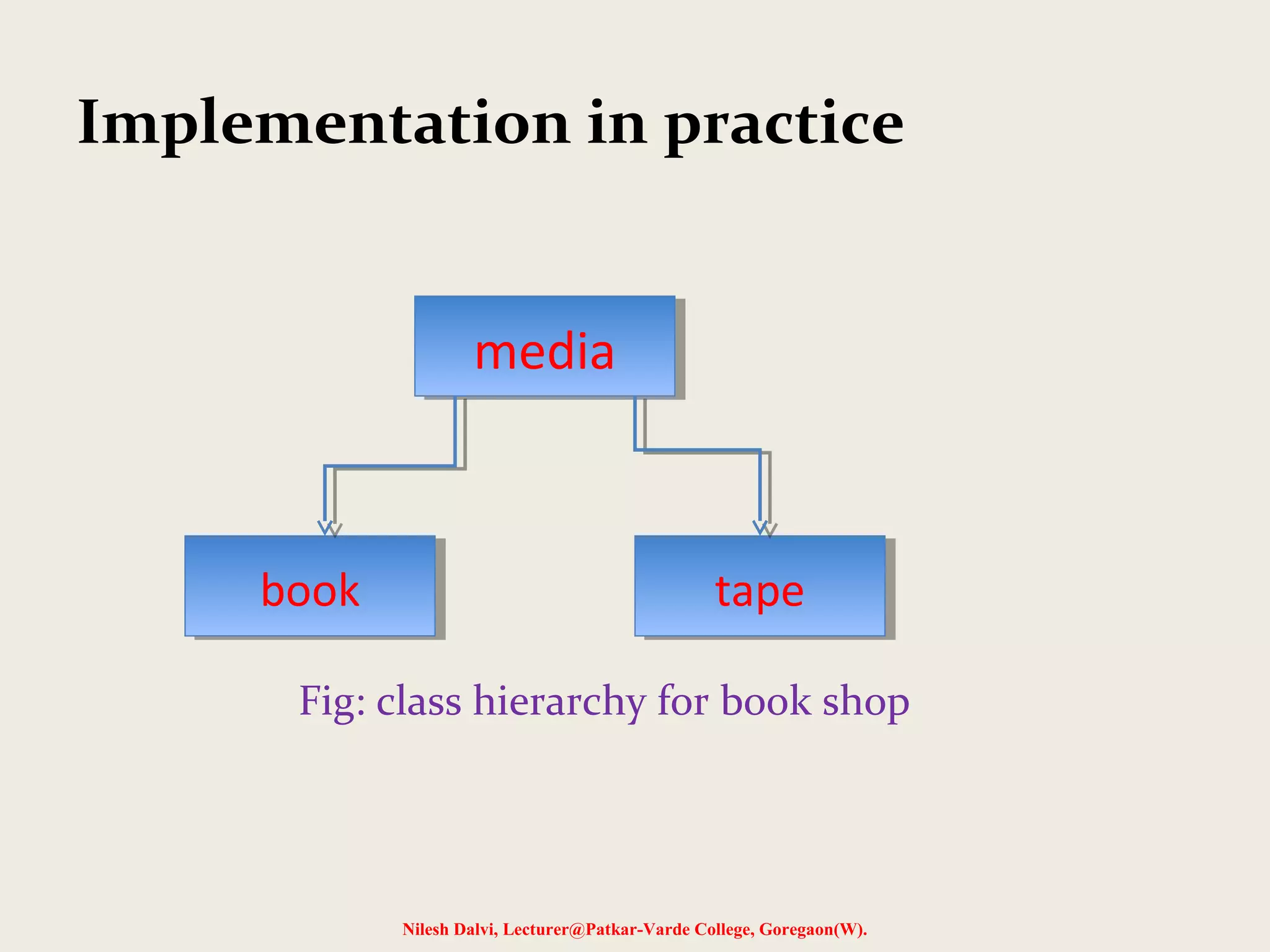
![Nilesh Dalvi, Lecturer@Patkar-Varde College, Goregaon(W).
Abstract Class
#include <iostream>
using namespace std;
class media /* Abstract class */
{
protected:
char *title;
double price;
public:
media(char *s, double p)
{
title = new char [strlen(s)+1];
strcpy (title, s);
price = p;
}
virtual void display() = 0; /* Pure virtual function */
};](https://image.slidesharecdn.com/8-140818233136-phpapp02/75/Polymorphism-38-2048.jpg)

